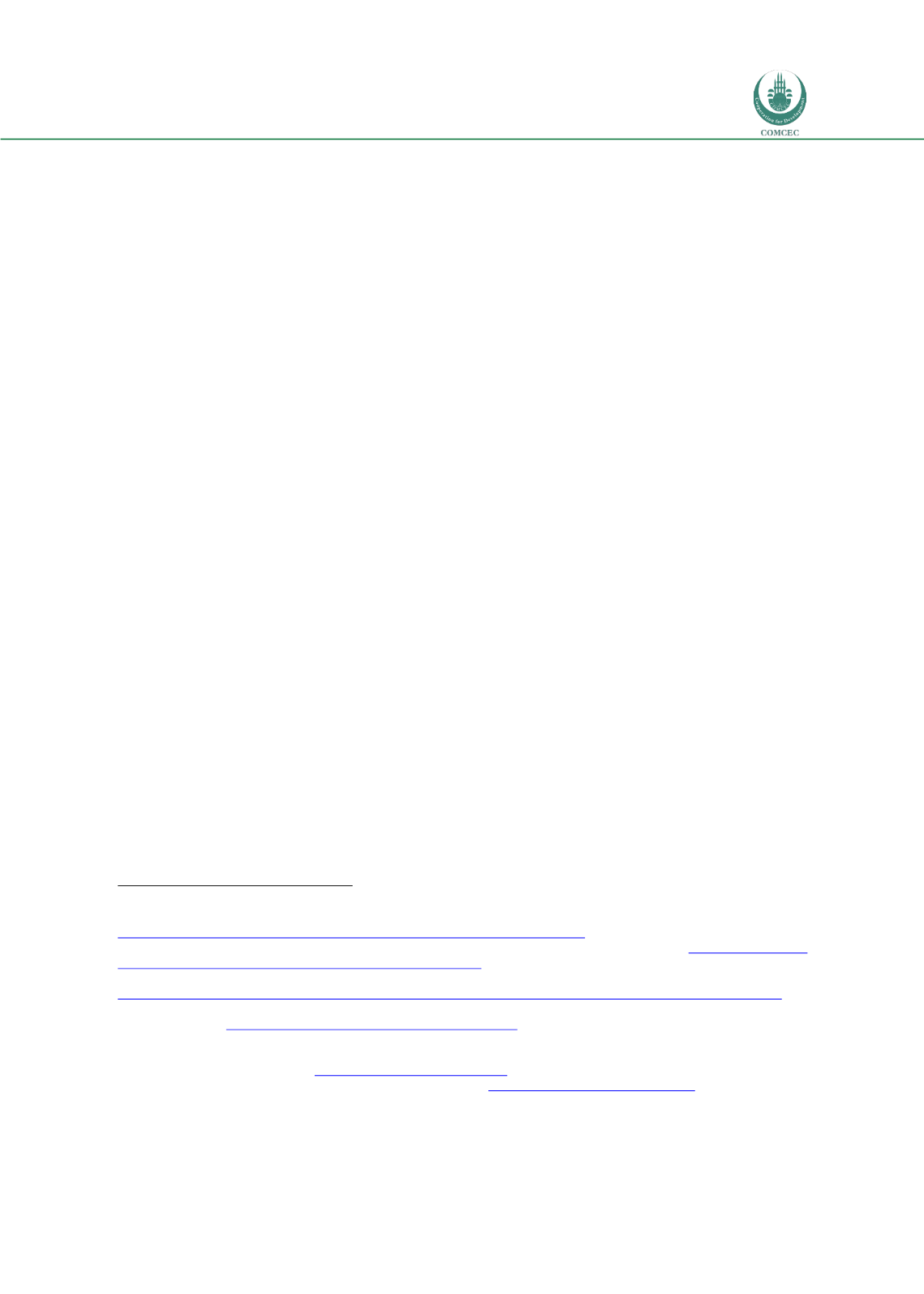

Forced Migration in the OIC Member Countries:
Policy Framework Adopted by Host Countries
139
often located far from outside markets or employment opportunities. Together, these factors
can undermine the goal of refugees eventually achieving self-sufficiency.
49
As more refugees arrive in Uganda, this has led to a decrease in the availability and quality of
the land itself.
50
In Adjumani District, which has taken in a significant number of South
Sudanese refugees from December 2013, there has been a shortage of land available for
cultivation; refugees interviewed in 2015 described receiving plots of land 30 by 30 meters or
smaller, rather than the 100 by 50 meters set out in government policy, which was already
criticized by some as being inadequate for self-reliance.
51
Land scarcity can create tensions
between refugees and host communities—for example, if refugees are allocated land that host
communities claim to have rights of access or ownership over, if land is deforested for
firewood, or if continued cultivation leads to land degradation.
52
Situation of urban refugees
The degree of freedom of movement under the 2006 Act—and the lax enforcement of the
registration requirement— coupled with greater livelihood opportunities means that there is
also a sizeable population living outside the refugee settlements. Kampala is home to 75,000
registered refugees who live in low-income areas of the city, though location and
concentration of refugee populations varies by nationality. Many Somali refugees live in the
district of Kisenyi, while many Congolese refugees live in the districts of Katwe, Makindye, and
Masajja; Burundian refugees are more scattered across the city.
53
When refugees opt to live outside Uganda’s refugee settlements, they can freely access
education and healthcare services throughout Uganda, but they have very limited access to
targeted refugee services, and must cover their own costs of living (e.g. rent, food, utilities). In
recent years, UNHCR’s budget for providing support to refugees in urban areas has increased,
but this assistance is targeted towards particularly vulnerable populations, such as single
parent households or unaccompanied children. Asylum seekers are able to access shelter and
food for up to three months while they register and await a decision on their application, but if
they wish to continue receiving support beyond this period, they must then relocate to the
rural settlements.
54
These high costs of living leave refugees in a precarious financial situation, and can deter
refugees from leaving settlements for urban areas altogether.
55
Many arrive in urban areas
with very little money and must rely on the generosity of other refugees or community
churches or mosques, or risk sleeping on the streets—for example, around the Old Kampala
49
Kaiser, 613; IRRI,
South Sudanese refugees in Adjumani District, Uganda
.
50
UNHCR,
OPM,
and
WFP,
Uganda
Joint
Assessment
Mission
2014
,
October
2014,
13,
http://documents.wfp.org/stellent/groups/public/documents/ena/wfp269958.pdf .51
IRRI,
South Sudanese refugees in Adjumani District, Uganda: Telling a new story?
July 2015, 14-15
, http://www.refugee- rights.org/Publications/Papers/2015/TellingADifferentStory.pdf ;Refugee Law Project,
Report on Rapid Assessment of South
Sudanese Refugee Influx into Northern Uganda,
Refugee Law Project Rapid Assessment Briefing Paper 2, March 2015,
http://www.refugeelawproject.org/files/briefing_papers/15_03_26_rapid_assessment_of_south_sudanese_refugees.pdf ;Erik Svedberg,
Refugee Self-Reliance in Nakivale Refugee Settlement, Uganda
, Independent Study Project Collection, Paper
1778, Spring 2014
, http://digitalcollections.sit.edu/isp_collection/1778 .52
See, for example, Bagenda, Naggaga, and Smith, “Land Problems in Nakivale Settlement”; and Kalyango Ronald Sebba,
“Land conflicts and their impact on refugee women’s livelihoods in southwestern Uganda,”
New Issues in Refugee Research
,
Research Paper No. 127, July 2006
, http://unhcr.org/44c882912.html .53
Urban Refugees, “Kampala, Uganda,” accessed May 20, 2016,
http://urban-refugees.org/kampala/ ;and Dale Buscher,
“New Approaches to Urban Refugee Livelihoods,”
Refuge
28, no.2 (2011): 17-29.
54
Women’s Refugee Commission (WRC),
The Living Ain’t Easy: Urban Refugees in Kampala
(New York: Women’s Refugee
Commission, 2011), 20.
55
IRRI,
South Sudanese refugees in Adjumani District, Uganda
.
















